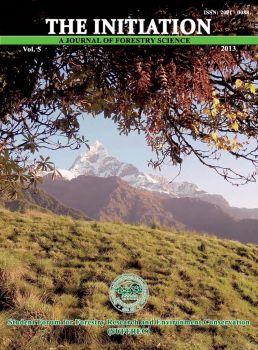Is Community Forestry Supporting for Minimizing the Income Inequality of Different Social Strata of Users’ Households: A case from Gorkha, Nepal
DOI:
https://doi.org/10.3126/init.v5i0.10245Keywords:
Community forest, Household, Income, Inequality, ClassAbstract
This research paper describes the share of community forest income to the total income of users’ households and its role in minimizing the inequality among different socio-economic group of users. Community forests support 12.3% of total household income to poor, 4.06% to middle and only 2.78% to rich class households. As there is huge difference in household income between three classes, the absolute income of CF to rich class households is largest though it seems greater to the poor in percentage income terms. Share of household input in terms of annual household income is highest (10.6%) for poor class households and lowest (2.4%) for rich class. CF income has more equalizing effect in the household income of poor class households.
DOI: http://dx.doi.org/10.3126/init.v5i0.10245
The Initiation 2013 Vol.5; 16-22

